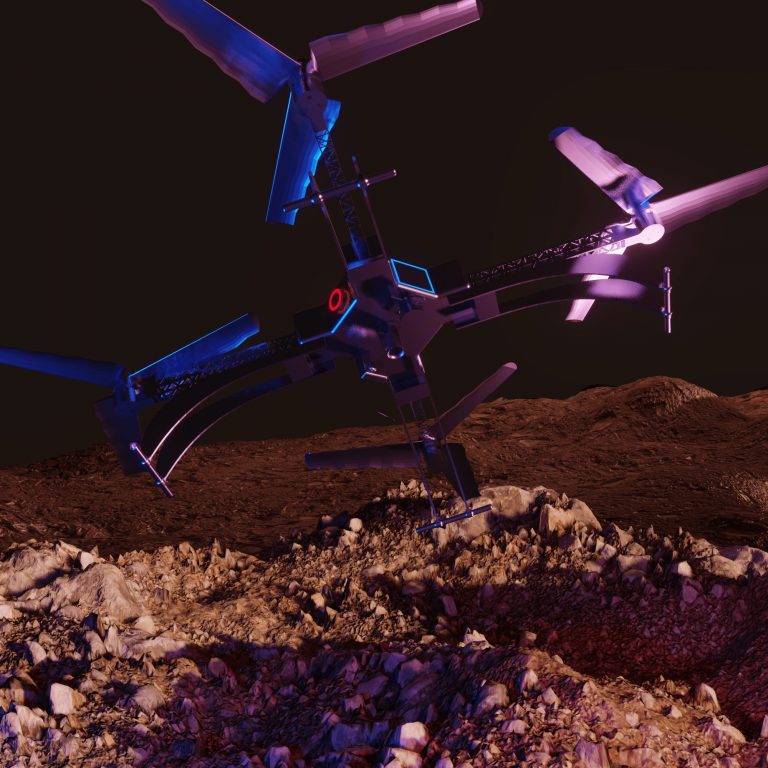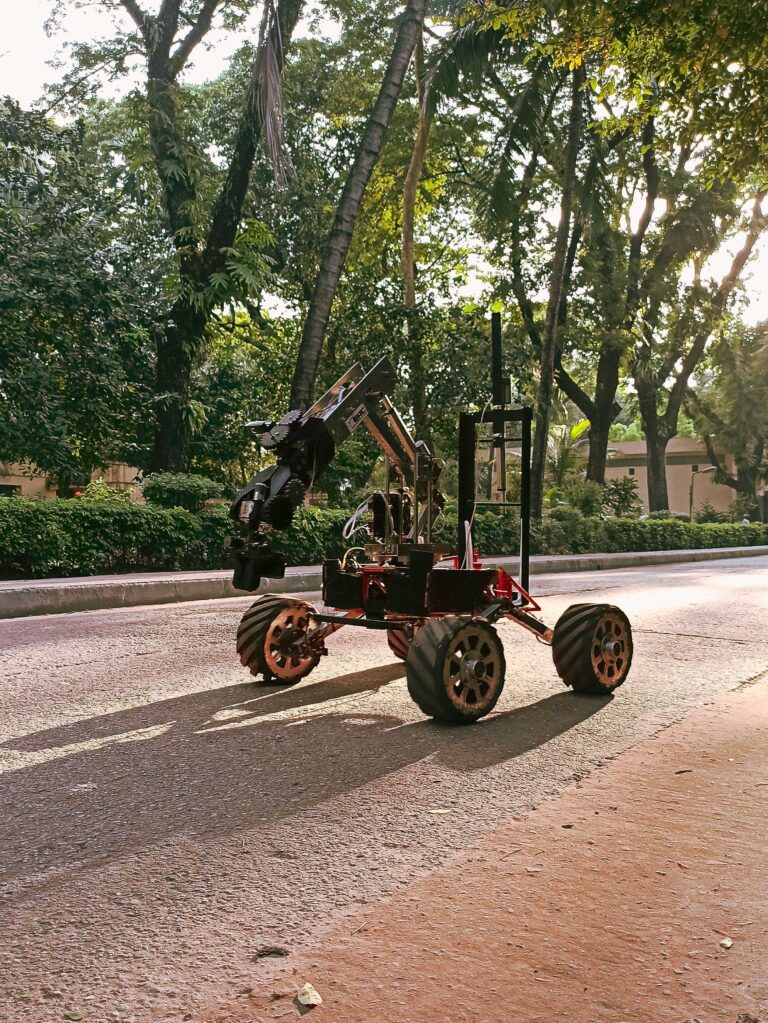With the combined effort of all the team members and experiences gathered from past competitions, we have designed our rover Anweshan V3.0 for University Rover Challenge 2021
This year the drive system consists of four wheels, each driven by a high torque worm gear module. These motors are self-locking, so it ensures that when there’s a sudden power failure, the wheels will automatically lock and prevent the rover from suffering serious damage.
For the suspension system, we implemented a “Bar Differential Mechanism” with a counter-link. This ensures that when the wheel on the right will go up, the wheel on the left will go down and the body will remain at an average angle between either way. So when the rover goes through rocky terrain, there will be minimum jerking of the body. This suspension system is more lightweight than the six-wheel rocker-bogie mechanism.
We have built a six-degree of freedom rover arm using stainless steel tubes for better stability and precision. The base of the Rover ARM is located at the center of the body for proper distribution of mass and can rotate 360 degrees on its axis, and stepper motors are used to drive shoulder and elbow. A bevel mechanism coupled with two servo motors is implemented in the lower wrist to achieve the beat and yaw of the people with precision.
We have implemented DC Motor Mechanism in order to get the roll motion of the end effector.
Our end effector can tighten a screw, undo a switch, turn a knob. We have attached a poly-fiber at the end of our gripper for better grip and stability.
We improved the strength of our 2-claw gripper system, with which we can pick up a container and transport it to another place, open and close a drawer and insert a cache into the drawer. The whole ark and manipulator is designed and built aligning with the Inverse Kinematics system that our software team is developing.
For the science mission, we have made robust changes to our science module for on-board testing of biomolecules to detect the presence of life. We’ve employed an auger drill system to collect and transport the soil sample to mixing chambers. This chamber has test tubes filled with reagents to test for different components such as nucleic acids, proteins, carbonate, and carbohydrates. We have also employed fluorescence imaging for better testing and detection. We also incorporated temperature, humidity, pressure, and various gas sensors to take decisions about habitability.





